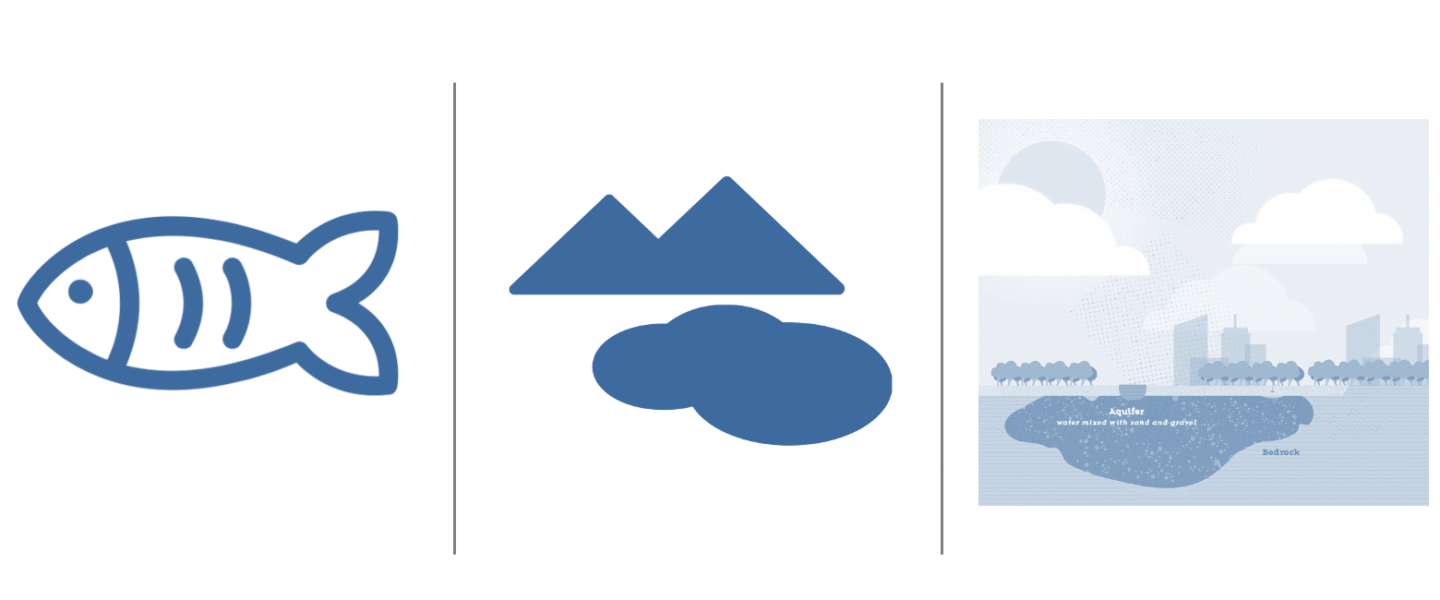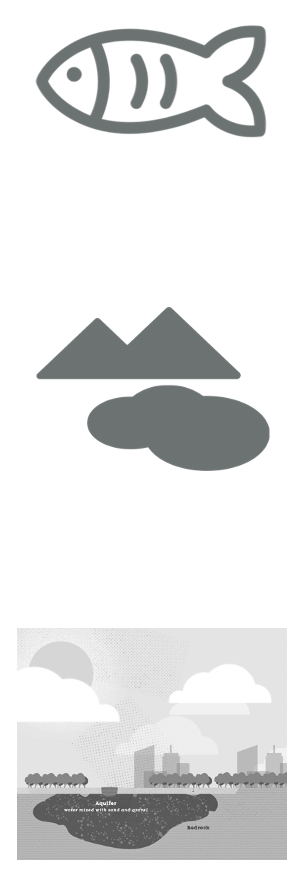
(This is part 2 in our racial justice essay series. Read more in our other posts: introduction, defining goals, getting proximate, taking stock)

Icons from The Noun Project
Imagine you are walking in the mountains (as I was, on a camping trip in the Eastern Sierras last week). You come across a lake. Sitting down on the banks of the lake to take in the view, you notice a dead fish. You think to yourself, “Odd. What happened to this fish? Did he not eat well? Did he not exercise enough? Was he a lazy fish, who didn’t work hard enough to provide for himself?”
Puzzled, you keep walking along the same lake and find hundreds more dead fish. This is eerie. Now you may consider, “Huh, could something be wrong with the whole lake? This many fish don’t just die by coincidence. Maybe this lake water is poisonous? Is there an algal bloom? Or toxic fertilizer runoff?” The problem appears bigger than one individual fish’s actions.
You keep hiking and encounter multiple lakes. You’re hoping for a different outcome so you can sit down and eat your packed lunch in peace. To your dismay and discomfort, you see that all the lakes have dead fish littering their banks! Now you’re angry. “Why are all these fish dying? What’s wrong with these lakes? How are they all getting poisoned?” The root of the problem is deeper than individual fish or individual lakes—it lies in the groundwater that seeps into all of the lakes.
The groundwater. So deep that you do not even see it. Hidden, but toxic. Below the surface, but extremely powerful. Poisoning all our lakes and killing many fish.
There is racism in the groundwater of our American society.
I first heard this allegory (and I’ll elaborate more below) at a Racial Equity Institute (REI) workshop in September 2019. Although I am White, since I am half-American and did not grow up in the US, I did not previously see myself as complicit in racism in America nor responsible for helping end it. At REI, I recognized that I am, and I’ve continued pursuing learning and action since. REI’s framework and teaching helped me see this. Its groundwater story communicates a complex reality in such a simple way, and we at Blue Garnet have incorporated it into how we talk about systems change. As we continue in our blog series on racial justice, we wanted to share it with you, too.
Racism affects every level and segment of American society. REI uses the above allegory to illustrate how underlying racism (the “groundwater”) feeds into all our systems and institutions (the “lakes”), harming individuals (the “fish”). Across “lakes,” we see disparate outcomes based on race. This is consistent and pervasive, but we have different language for this disparity in each sector (e.g., “health disparities” in healthcare, “racial disproportionality” in social services, “disproportionate minority contact” in juvenile justice, and “achievement gaps” in education). But the pattern of “fish” wellbeing is the same—Black Americans fare the worst, followed by Native American, Latinx, and Asian Americans varying in the middle, while White Americans experience the best outcomes. This same pattern is seen across the health, wealth, criminal justice, educational attainment, and other lakes.
Because we see this phenomenon across the board, the differences cannot be attributed to individuals’ behavior. It’s not about a “fish’s” nutrition, or exercise habits, or level of resilience, or if they attend financial coaching. Socioeconomic status does not explain these differences, either. For example, “White women with a high school diploma have lower infant mortality rates than Black women with MAs, JDs or PhD’s,” (CDC, see REI for more examples). Rather, these differences stem from “a history of structuring opportunity for certain groups while denying others,” according to REI’s Reiney Lin. REI’s whitepaper goes in depth on the history and current reality of racism in America.
So how do we do something about systemic racism? Start by considering and working toward groundwater solutions, even as we continue addressing injustices on every level. As a society, we still need to support individual “fish”– people are hungry today, so we do need food banks and meal servings. Many people don’t have a roof over their heads, so we need shelters for the unhoused. At the same time, the symptoms and suffering we see in individuals often stem from a deeper disease that is generational, societal, and institutional. To ensure a thriving, healthier population in the future, we also need groundwater solutions. We can’t treat only symptoms when the sickness goes unchecked. We need food banks and fair wages and hiring reform. Whatever level and area of social change you work in, you cannot avoid the root causes of your community’s pain.
To further immerse yourself in “groundwater” thinking:
- Start by tuning into an REI’s virtual workshop on “The Groundwater Approach.” Their sessions this week filled up quickly, but sign up for their newsletter to hear about upcoming events. You can also read their whitepaper, full of data and research
- Practice drilling down to an issue’s root cause with the “The 5 Why’s” approach. This management technique asks “why” of every layer of a problem until you reach its origin
- Consider your own organization, and ask yourself:
- What root causes contribute to the problems I see in my community, and how does this relate to my organization’s mission?
- What power, knowledge, resources, and strengths do I, or my organization, have to help solve that root cause? Which can we grow in?
- If we don’t possess these, who can we partner with, fund, or collaborate with that is tackling the systemic issues?
- Where can I transition part of my organization’s efforts to tackle systems change? Where can I engage as an individual?
- Shameless plug: keep reading the BG essay series on racial justice! We’ll dive deeper into some of the questions raised here
What resources and frameworks have guided your thinking on racial equity and systems change? Additionally, if you want to chat more with us about our racial justice journey, or how we can partner with you in yours, please contact us at hello@bluegarnet.net
Sources: Specific articles and Groundwater allegory drawn from:
Hayes-Greene, Deena, and Bayard P. Love. The Groundwater Approach: Building a Practical Understanding of Structural Racism. The Racial Equity Institute. 2018
“Phase 1 Workshop.” Hosted by Racial Equity Institute in Westwood, California. September 14-15, 2019.
